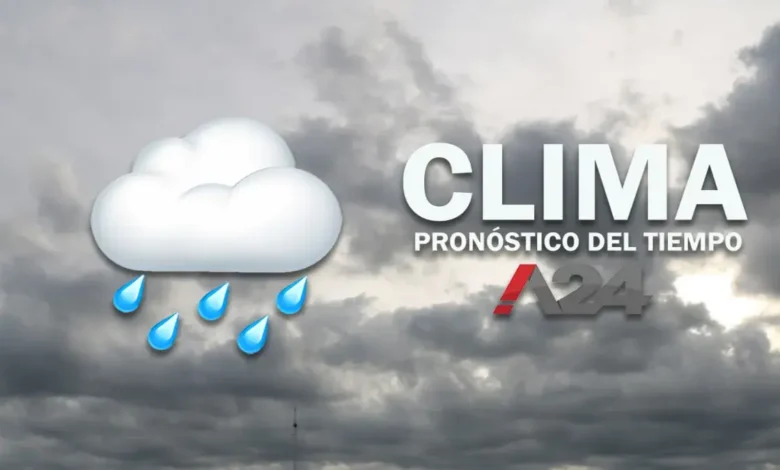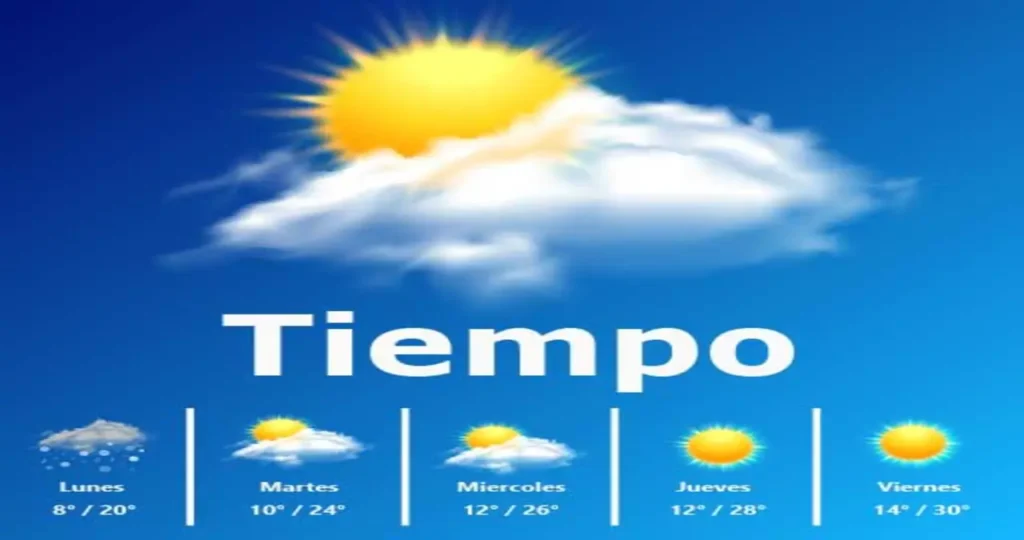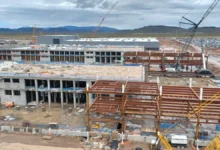Tiempo de Mañana: Understanding the Dynamics of Tomorrow’s Weather1

Introduction: What is “Tiempo de Mañana”?
Tiempo de Mañana When we talk about “tiempo de mañana,” we’re referring to the weather forecast for the coming day. “Tiempo” simply translates to “weather” in Spanish, and “mañana” means “tomorrow.” This simple phrase carries a lot of significance for anyone looking to plan their day ahead—whether it’s a casual outing, an important event, or even simply determining how to dress. Understanding the factors that influence tomorrow’s weather is key to navigating the unpredictability of nature.
Weather forecasts are based on a complex interplay of meteorological data and scientific models. But how reliable is the weather prediction for tomorrow? How can we interpret the different factors that influence what we will experience? In this article, we’ll explore the nuances of “tiempo de mañana,” providing insights into forecasting, factors that shape tomorrow’s weather, and how you can make the best use of this knowledge.
The Basics of Weather Forecasting
Meteorology: The Science Behind Weather Prediction
Weather forecasting has evolved tremendously over the past century. Initially, weather predictions were based on human intuition and observations of cloud patterns, wind directions, and temperature. Today, meteorology has become a highly specialized field that uses advanced technology to predict future weather with impressive accuracy.
At the core of weather forecasting is a combination of satellite imagery, radar systems, weather stations, and powerful supercomputers. These tools help meteorologists gather real-time data on various atmospheric conditions such as temperature, humidity, wind speed, and pressure. With these inputs, meteorologists create weather models that simulate how weather systems will evolve over time.
The primary goal of forecasting “tiempo de mañana” is to predict the conditions that will affect daily activities. Forecasters rely on historical weather patterns, seasonal trends, and geographic factors to predict tomorrow’s weather. While weather prediction isn’t perfect, modern forecasting has significantly improved, offering us a high level of accuracy for “tiempo de mañana.”
The Role of Technology in Weather Forecasting
In today’s world, the tools used for weather prediction are far more sophisticated than anything available to meteorologists in the past. Satellites, for example, orbit the Earth and provide a bird’s-eye view of weather systems as they develop. These satellites are able to capture data on cloud formations, storm activity, and temperature trends across vast areas.
One of the most groundbreaking advances in weather technology is the use of supercomputers. These machines simulate the Earth’s atmosphere and predict how air masses and weather systems will evolve. They crunch vast amounts of data and provide forecasts that are continually refined and updated in real-time. This allows meteorologists to offer more accurate “tiempo de mañana” predictions.
Moreover, radar systems help track precipitation, particularly thunderstorms, rain, and snow. By sending signals into the atmosphere and measuring how they bounce back, radar allows weather experts to track storm systems and assess their intensity. This can help us better understand whether tomorrow will bring clear skies or intense weather conditions.
Key Factors That Influence “Tiempo de Mañana”
Atmospheric Pressure and Weather Patterns
One of the primary drivers of weather is atmospheric pressure, which is the weight of the air above us. High and low-pressure systems play a pivotal role in determining the “tiempo de mañana.” Low-pressure systems are typically associated with cloudy skies, rain, or storms, while high-pressure systems often bring clear skies and stable weather.
When a low-pressure system approaches, we can expect weather to change dramatically. If this happens, we might experience rain, snow, or even severe weather such as thunderstorms. On the other hand, high-pressure systems tend to bring calm, dry conditions. Understanding how atmospheric pressure affects weather is critical in forecasting “tiempo de mañana.”
Wind patterns are also influenced by pressure systems. Winds flow from areas of high pressure to areas of low pressure, and these patterns can help forecasters predict the movement of weather systems. By analyzing wind direction, speed, and shifts, meteorologists can make informed predictions about what the weather will look like the following day.
Temperature and Humidity: A Delicate Balance
Temperature is another key element in determining what the weather will be like tomorrow. The Earth’s surface is heated unevenly by the sun, creating temperature gradients. These gradients lead to the development of winds, clouds, and other weather phenomena. For example, if a warm air mass collides with a cold air mass, the result might be precipitation, such as rain or snow.
Humidity also plays an essential role in weather predictions. The amount of moisture in the air can significantly affect the type of weather experienced. High humidity levels are often linked to thunderstorms and heavy rainfall, while lower humidity levels are typically associated with drier conditions.
When we look at the “tiempo de mañana,” the balance between temperature and humidity is a crucial factor in determining whether we will face a sunny day, a stormy afternoon, or even unexpected fog or snow.
How to Interpret a Weather Forecast for Tomorrow
Understanding Weather Maps and Symbols
When you look at a weather forecast, you may see symbols such as sun icons, cloud coverage, or a thermometer. But what do these symbols really mean for your day ahead? Weather maps and symbols help translate complex meteorological data into something that’s easier for the general public to understand.
A sunny symbol indicates that the weather will be clear with little to no cloud cover. Conversely, cloud symbols signal that the sky will be overcast or that there may be some precipitation. Temperature readings on the map will show you whether it will be a hot or cold day, and wind arrows will illustrate the direction of the wind.
Additionally, weather maps often display fronts—lines that indicate the boundary between different air masses. When a cold front moves in, it can bring significant temperature drops and sometimes storms, while a warm front generally signals a rise in temperature and milder weather.
Understanding these symbols and maps is important for interpreting “tiempo de mañana” forecasts accurately. It helps us decide whether to pack an umbrella, dress warmly, or prepare for clear skies and sunshine.

Using Technology to Get the Most Accurate Forecast
While traditional methods of weather forecasting, such as television broadcasts or newspaper reports, are still useful, today’s technology offers even greater accuracy. Many people now rely on apps or websites that provide live weather updates, allowing them to check the “tiempo de mañana” as frequently as they like.
These tools use real-time data and advanced algorithms to offer hyper-local forecasts. For example, you can get predictions for specific neighborhoods or even the exact time of day when rain will start or end. This hyper-local accuracy can help you make more informed decisions about your plans.
Moreover, weather apps often provide notifications to alert you about sudden changes in the forecast. Whether it’s a rainstorm approaching or a temperature drop, these apps ensure that you’re prepared for whatever tomorrow may bring.
The Impact of Seasonal Changes on “Tiempo de Mañana”
Spring and Summer Weather Patterns
Spring and summer months are typically associated with warmer weather, but these seasons also come with their own set of challenges when it comes to forecasting “tiempo de mañana.” In spring, the weather can be especially unpredictable, with cold fronts clashing with warm air, creating conditions for thunderstorms, tornadoes, or hail.
During summer, high-pressure systems often dominate, bringing long stretches of sunny, dry weather. However, summer is also notorious for intense storms, especially in tropical areas. Knowing how seasonal patterns affect weather helps meteorologists predict the likelihood of storms or heatwaves in the coming days.
Autumn and Winter Weather Patterns
In contrast, autumn and winter bring cooler temperatures and more precipitation. As the Earth tilts away from the sun, lower temperatures become the norm. During these months, low-pressure systems are more common, and forecasters often need to predict snow, sleet, or freezing rain when temperatures drop to or below the freezing point.
In winter, forecasts can be especially critical because extreme weather conditions like blizzards or ice storms can disrupt transportation, power grids, and daily life. Therefore, understanding seasonal variations in “tiempo de mañana” becomes crucial for safety and preparedness.
Conclusion: The Art of Predicting “Tiempo de Mañana”
Weather forecasting is a blend of science, technology, and expert judgment. As we’ve explored, various factors—from atmospheric pressure to temperature and seasonal patterns—play an integral role in determining the weather for tomorrow. By understanding how meteorologists interpret data, we can become better prepared for the unpredictable nature of “tiempo de mañana.”
With the advances in technology and forecasting models, we now have access to more accurate weather predictions than ever before. Whether you’re planning an outdoor activity or simply deciding what to wear, knowing what to expect for tomorrow’s weather can make your day a lot more enjoyable.
As we continue to rely on “tiempo de mañana” forecasts, it’s important to remember that weather can still surprise us. No forecast, no matter how precise, can predict every variable. But with the right tools and understanding, you can stay ahead of the curve and make the best choices based on the forecast for tomorrow.
This article aimed to explore the world of “tiempo de mañana” in a detailed and comprehensive way. By understanding the basics of weather forecasting, the technology behind it, and the factors influencing tomorrow’s weather, you are now better equipped to interpret forecasts with confidence.
Let me know if you’d like me to further refine or expand upon any sections of the article!






